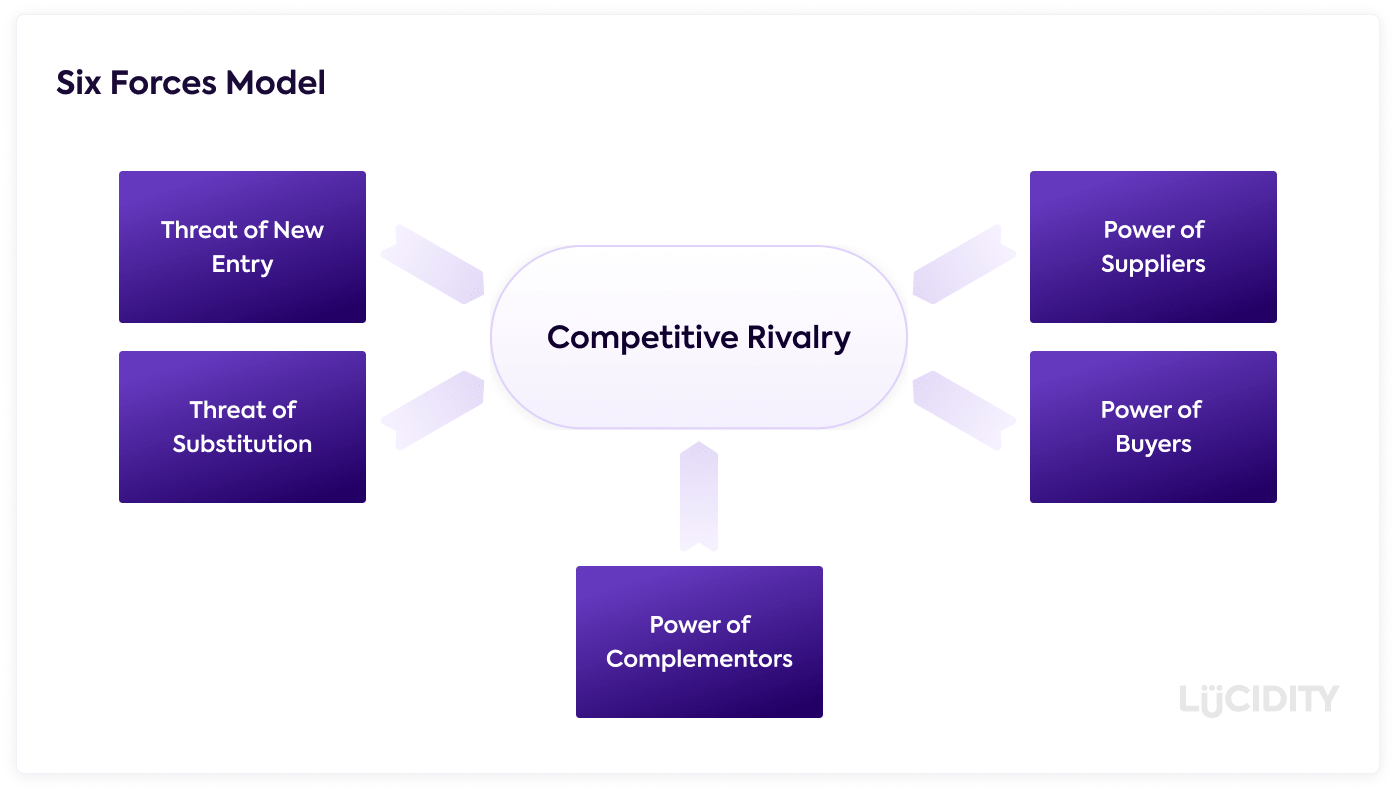There are many aspects of a market that can impact your performance. The Six Forces model attempts to extend Porter’s Five Forces model and list out the different areas that could impact you.
Completing a Six Forces Analysis may reveal the areas you need to consider when planning. We’ve created this guide to help you develop your framework…
Step 1 – Preparation is Key
Six Forces is a really informative framework but you need to be aware of your market dynamics in quite a bit of detail. If you’re not, gather a team of people who can assist. It’s all about your external influences, so look for representative from Sales, Marketing, Product and Service to help.
Be equipped with the following information:
- Your competitor’s performance in the market
- Customer churn statistics and detail behind them
- Reasons you’ve won deals in the past
- Client feedback
- Overall market size and different players
- An understanding of who your suppliers are
Step 2: Complete Five Forces
The first five forces in the Six Forces model are the same as the Porter’s Five Forces model, so you can follow our guide to completing Porter’s Five Forces. If you’ve completed this, you’ll have detail of:
- Threat of New Entry
- Threat of Substitution
- Power of Suppliers
- Power of Buyers
- Competitive Rivalry
…and you’re ready to move on to the sixth force below.
Step 3: Power of Complementors
Complementors are products or services that offer more value together than apart. An example is an iPhone case company, the success of this product is tied heavily to the success of the iPhone itself.
Consider the following:
- What products or services complement your current offering?
- What products or services do you complement?
- What companies are present that could be partnered with?
- What segments of the market can you target based on complementors?
- What are the customer opinions of the products?
- What impact do they have on you?
When you’ve listed out your items, label the power to be High, Medium or Low. In the iPhone case example we gave, the provider heavily relies on the iPhone, so the power is High.
Now review your previous Competitive Rivalry force. With the information you’ve listed in Complementors, is it still correct?
Step 4 – Making Sense
You’ve created quite a comprehensive model of your marketplace, congratulations! But what does it mean? It’s time to decide about how you’re going to position yourselves to take advantage of everything going on within the Six Forces. Consider using Generic Strategies, The Strategy Clock or the ADL Matrix as a next step.
We hope you found this guide helpful!













